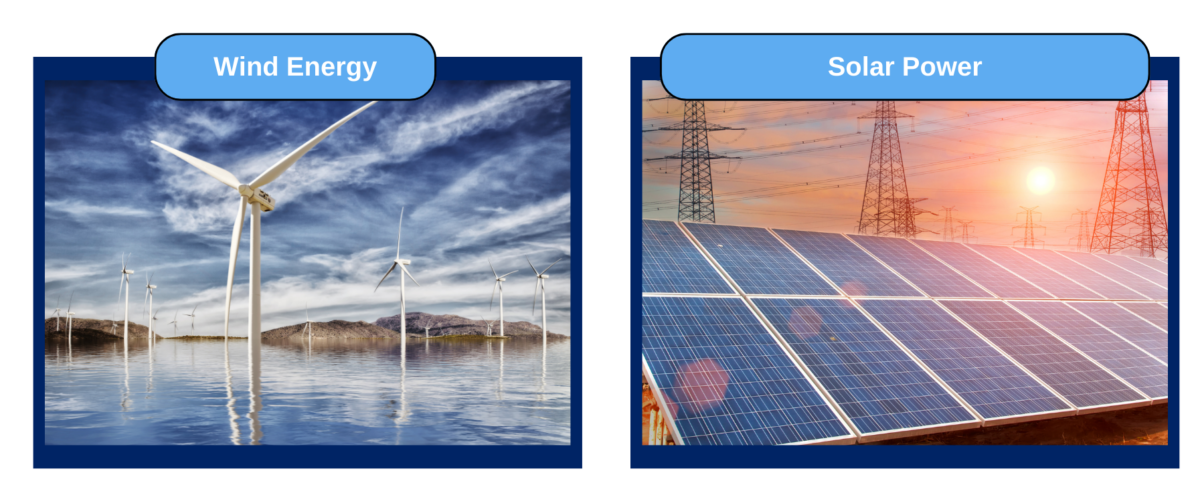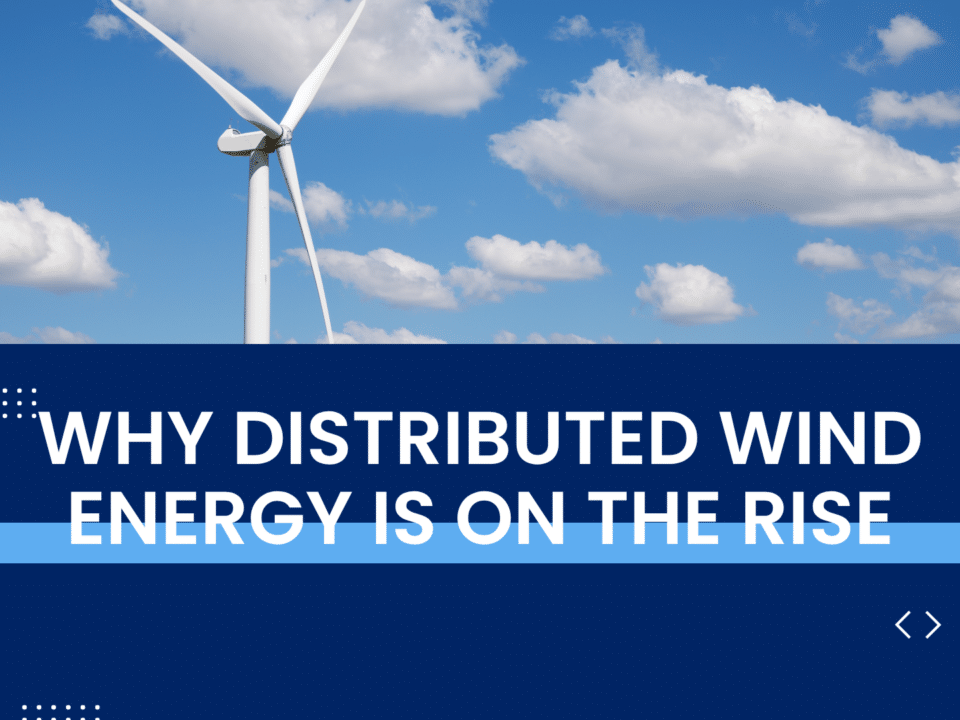
Mastering Wind Energy Mechanics: Essential Training
March 6, 2025
Safe Harboring in Wind Energy: Securing Projects Early
May 7, 2025As the world moves toward sustainable power solutions, wind and solar energy are two of the leading green energy alternatives. But when comparing wind energy vs. solar power, which one comes out on top? The answer depends on several factors, including energy efficiency, cost, reliability, and environmental impact. In this blog, we’ll break down the key differences to help you decide which renewable energy source is best for your needs.
How Wind and Solar Energy Work
Wind Energy
Wind turbines harness the kinetic energy of the wind to generate electricity. As wind moves the turbine blades, a generator converts this mechanical energy into usable power. Wind farms can be installed onshore or offshore, with offshore turbines benefiting from higher wind speeds.
As wind technology advances, turbines are becoming larger and more efficient. According to the National Renewable Energy Laboratory, modern wind turbines have increased hub heights and rotor diameters, allowing them to capture more wind and produce higher amounts of electricity.
Solar Power
Solar panels, or photovoltaic (PV) cells, absorb sunlight and convert it into electricity. The amount of electricity generated depends on the intensity of sunlight, meaning solar power is most effective in sunny climates. Solar panels are widely used for homes, businesses, and large-scale solar farms.

Energy Efficiency: Which Produces More Power?
Wind Turbine Efficiency
Wind turbines typically have a capacity factor of 35-50%, meaning they generate electricity more than one-third of the time, depending on wind conditions. This makes wind power a more efficient option for large-scale electricity production.
Solar Energy Efficiency
Solar panels have a lower capacity factor, around 15-25%, since they only produce electricity during daylight hours. Cloudy weather and nighttime reduce energy production, requiring battery storage or grid support to maintain reliability.

Winner: Wind Energy
When it comes to overall renewable energy efficiency, wind turbines produce more electricity over time compared to solar panels.
Cost Comparison: Which is More Affordable?
Installation Costs
- Installing solar panels for a home typically costs $10,000 to $30,000.
- A single commercial wind turbine costs between $2-4 million, making wind power more suited for utility-scale projects rather than residential use.
Maintenance Costs
- Solar panels require little maintenance and can last 25-30 years.
- Wind turbines have moving parts that require regular maintenance, increasing long-term costs.
Energy Production Costs
The wind energy cost analysis shows that wind often has a lower levelized cost of energy (LCOE), meaning it provides cheaper electricity over its lifetime compared to solar. However, solar panel cost comparison reveals that solar is more accessible for homeowners and businesses.

Winner: Solar Power
Solar panels have a lower upfront cost and minimal maintenance, making them the best clean energy source for individuals and small businesses.
Environmental Impact: Which is Greener?
Wind Farm vs. Solar Farm
- Wind farms require large open spaces but can coexist with agriculture. However, they can impact bird and bat populations.
- Solar farms require significant land space and depend on mined materials like silicon and rare metals, which have environmental consequences.
Both renewable energy sources produce zero emissions during operation, reducing dependence on fossil fuels.Winner: Tie
Both wind and solar energy have environmental trade-offs, but they remain among the best green energy alternatives available today.

Which One Is More Reliable?
Wind Power Reliability
Wind turbines can generate electricity day and night, as long as wind speeds are sufficient. However, wind is unpredictable and varies by location.
Solar Power Reliability
Solar panels depend on consistent sunlight and do not produce electricity at night. Homeowners often install solar batteries or connect to the power grid for backup energy.
Winner: Wind Energy
Wind turbines provide a more consistent power supply, making them ideal for large-scale renewable energy benefits.

Which One is Right for You?
- Choose wind energy if you have strong, consistent winds in your region or are investing in utility-scale renewable energy projects.
- Choose solar power if you live in a sunny region and want an affordable clean energy solution for your home or business.
Final Verdict
There is no single “best clean energy source”—both wind and solar power play crucial roles in the transition to sustainable power solutions. Wind energy is more efficient for large-scale production, while solar energy is more cost-effective and accessible for homeowners.
For those looking into renewable energy comparisons, considering factors like solar energy efficiency, wind turbine efficiency, and electricity bills can help make an informed decision. Additionally, geothermal energy and other clean energy options may be worth exploring for long-term sustainability.Want to learn more about how wind turbines are evolving? Check out this article from the U.S. Department of Energy: Wind Turbines: Bigger & Better.




